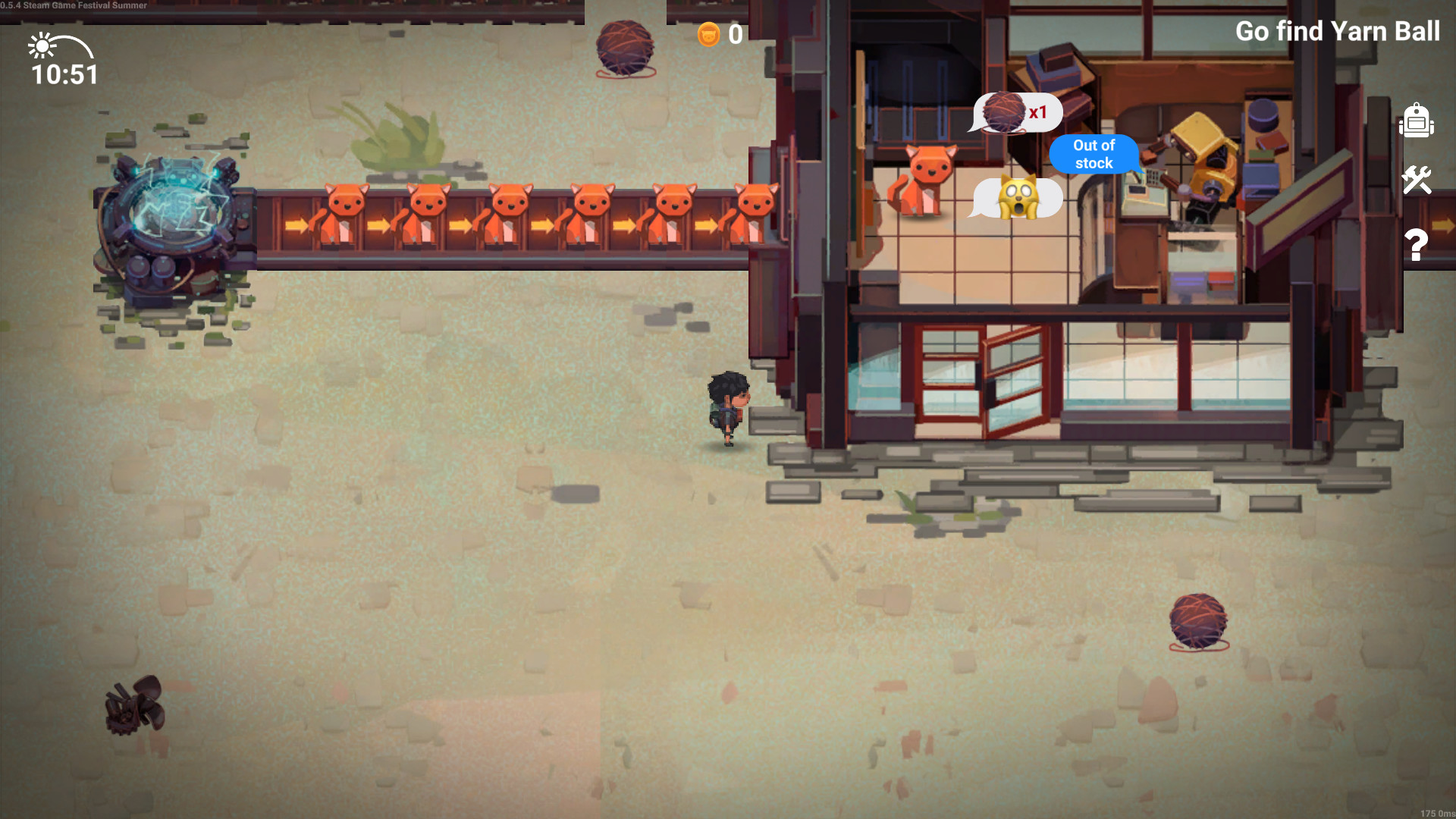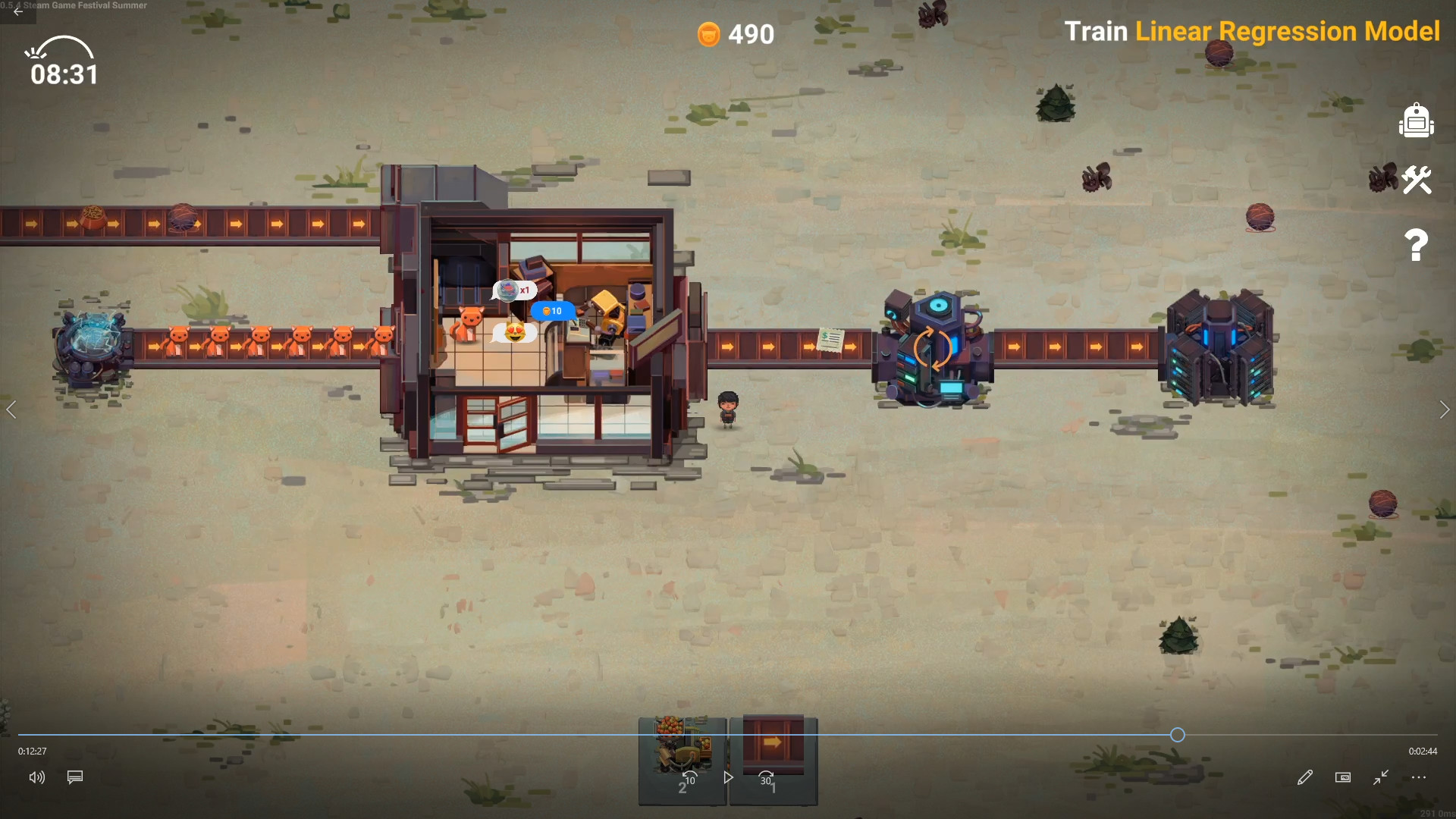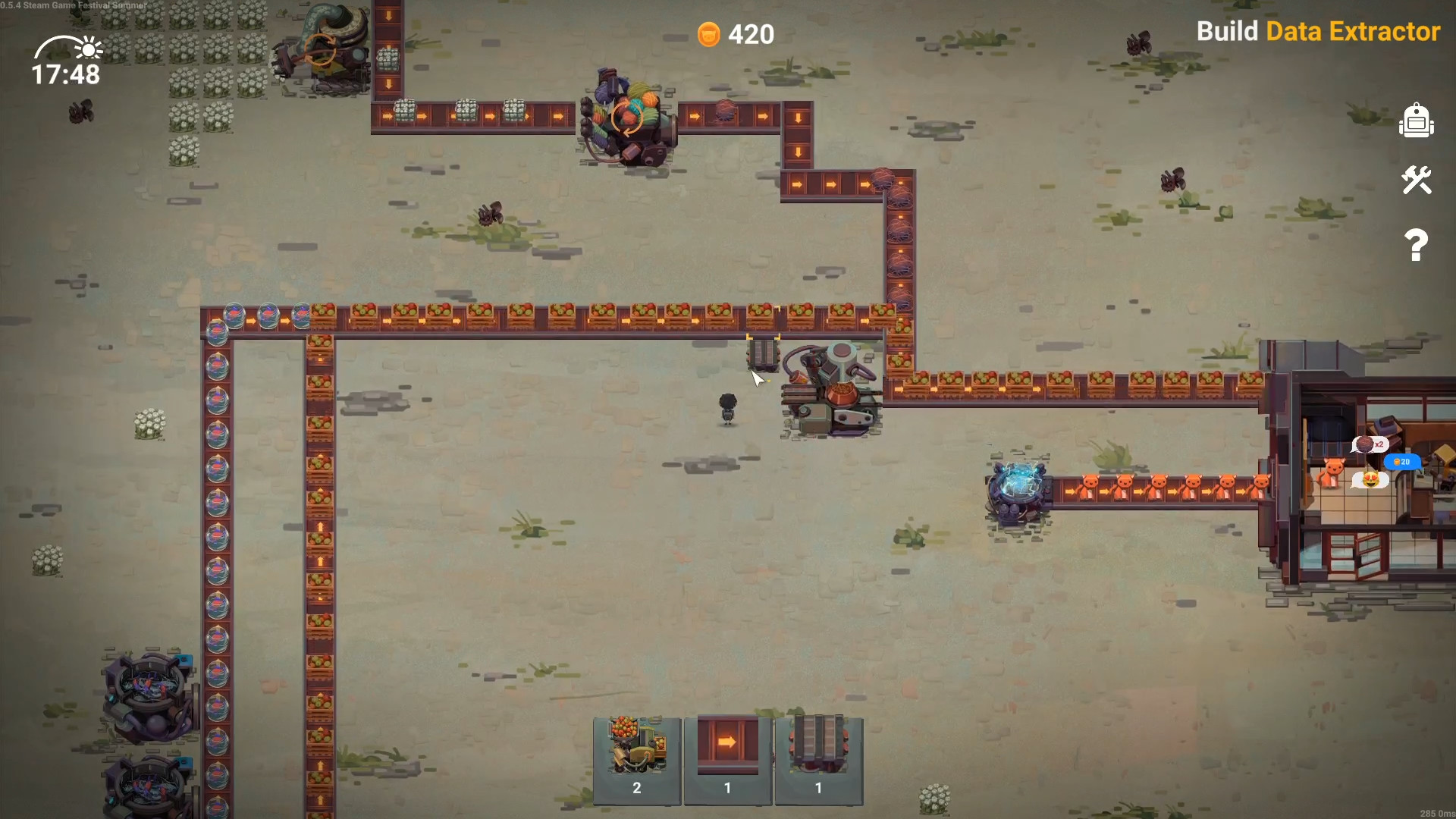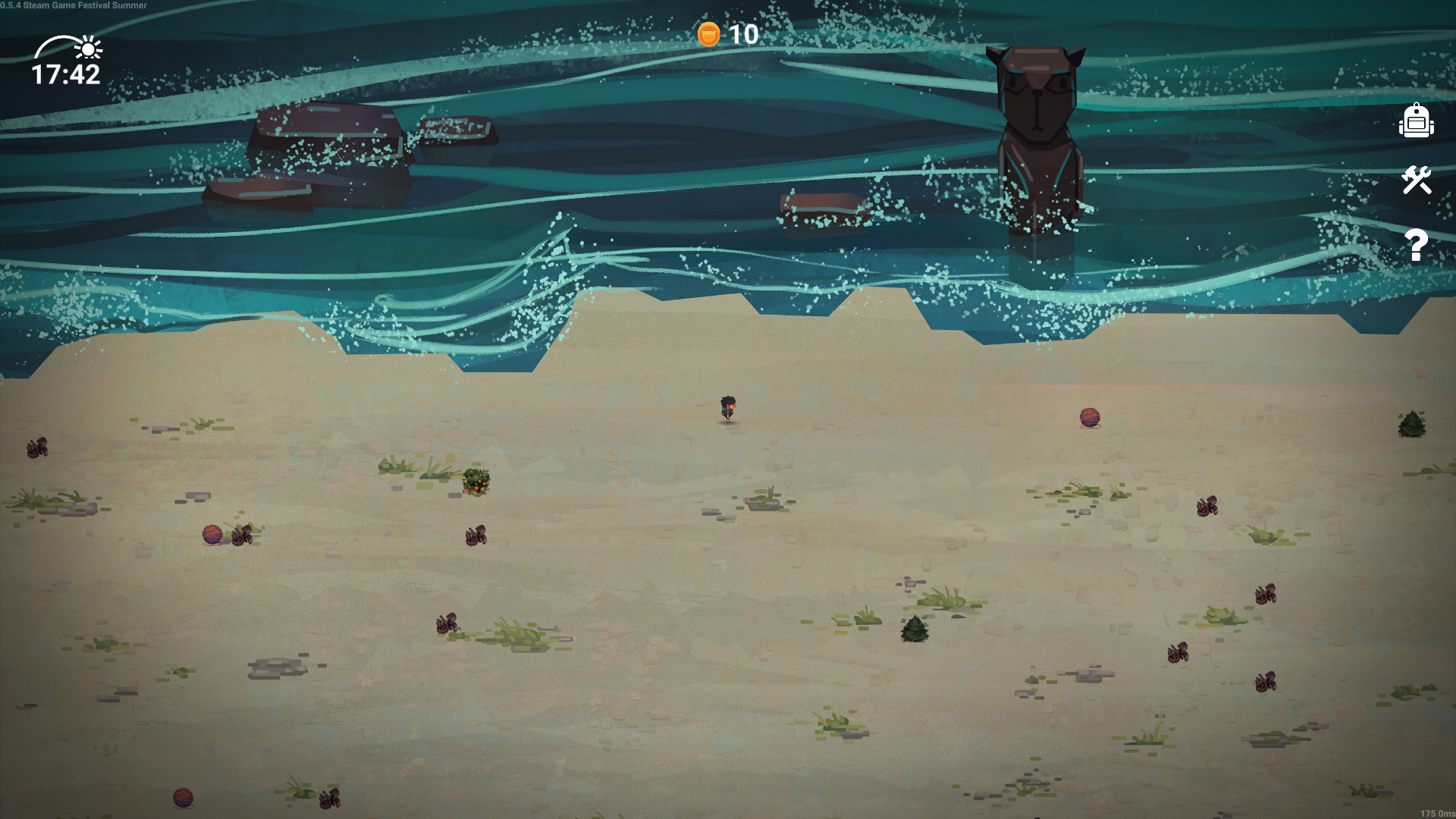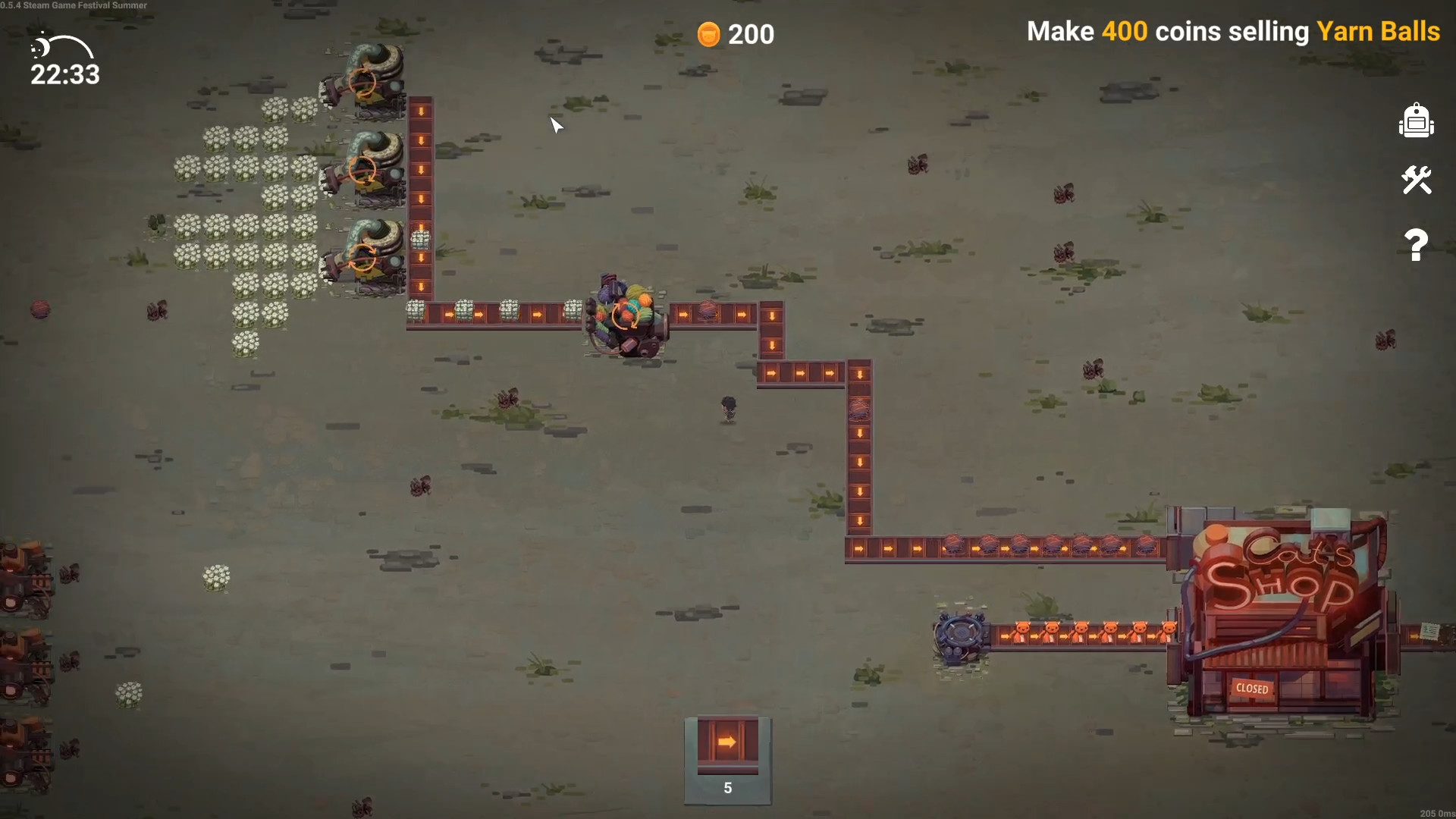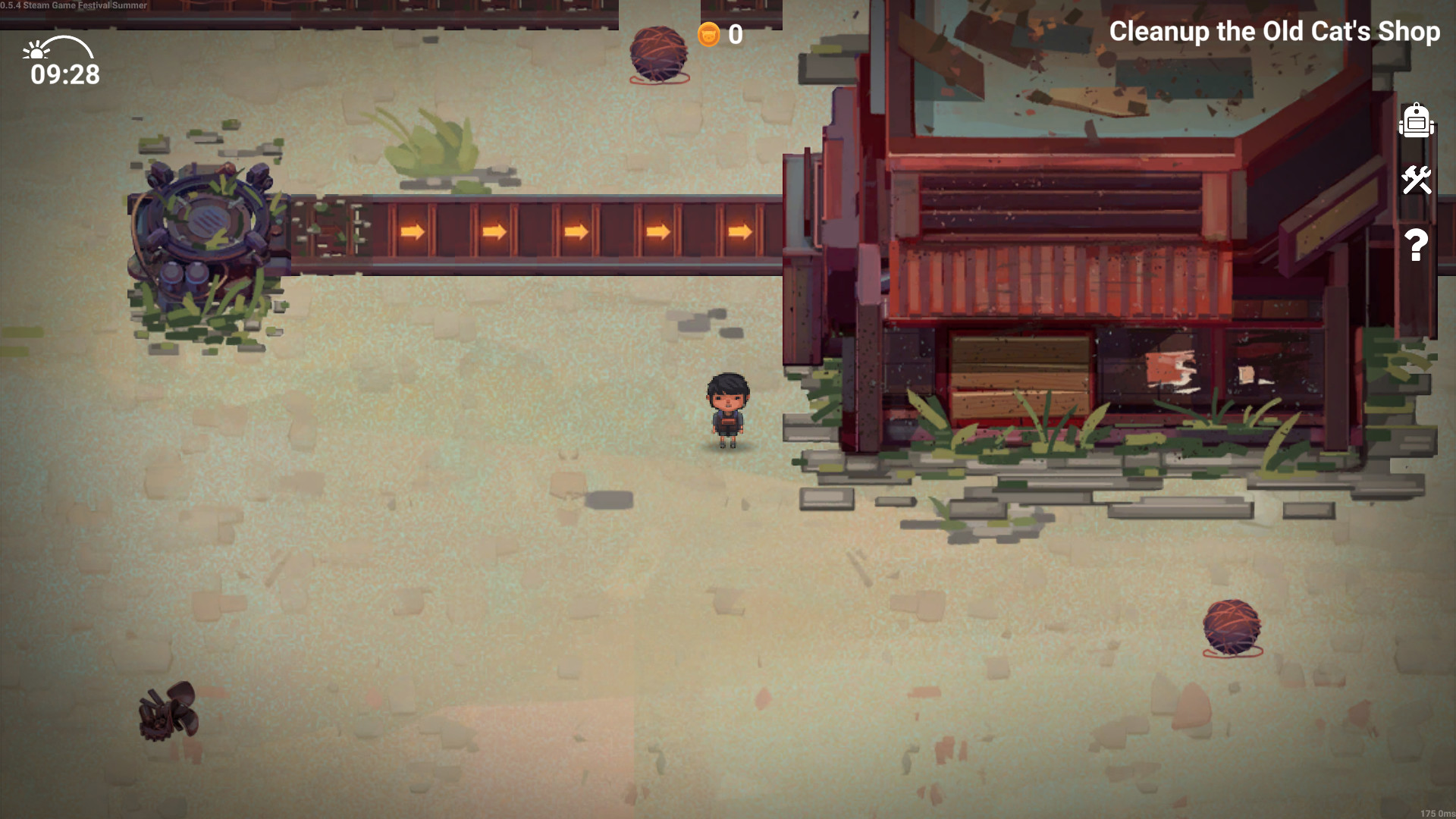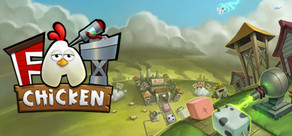It's all part of perhaps the most important quest: trying to understand what your cat REALLY wants. Do you want that door opened? Or closed? Understanding such complicated creatures cannot be done without analyzing huge amounts of data and building a neural network. And there's just a place to go for all that.
Welcome to what once was the largest research site of cat behavior in the world: the now-defunct KOTOVOD Learning Factory. It was built to process the insane amount of data about cats and their habits. The project was shut down many years ago and now it's up to you to bring the mighty KOTOVOD back to its former glory
- Construct cat-entertaining facilities to collect data about furry creatures
- Analyze the data with Machine Learning to find features and create better quality stuff for your pets
- Automate and optimize KOTOVOD: you can never make cats too happy, you know
- Learn how machine learning works by studying whimsy cats
- Add to your wishlist
- Sign up for Free Alpha via Discord or by email
Out first game about Machine learning
https://store.steampowered.com/app/619150/while_True_learn/What is machine learning?
Machine learning is a real-world technology that helps us to predict the future. This technology is covered with tons of mysteries theories but how exactly those predictions are made? In this game, you will use real machine learning from the simplest things to extremely complex ones. You will see that there is no dark magic here.Digital Factory
Everyone can easily imagine a regular factory, but what is going on inside a “digital factory” like Amazon or Google?) How they understand what to offer, how to attract users, how reviews influence their business? We want this tycoon/sim game to help people learn more about digital factories, machine learning tech, and digital marketing.
As your game gets closer to the release, you tend to look back more and more often. How many years has it been? Learning Factory was first drafted during the early pandemic months of 2020. Four and a half years in development is no record, but the density of events matters: we started with a quite different game. Let's talk about that today!
To set up the mood, check out this short video of how the game looked back in pre-alpha times vs. 2 years ago vs. today:
(It doesn't cover even half of the changes we made, so there probably will be more videos like that in the future)
Since we started digging up the past, we decided to remember some of the features that had been in the game initially, but disappeared under not so mysterious circumstances.
Day & night cycles
Learning Factory was contemplated to be a more compact game, with a good part of gameplay revolving around machine learning. It was more of a tycoon than a factory-building experience, in which the player would run a shop for cats by day and train machine learning with fresh sales data by night.
It turned out that machine learning models were not as interesting to tinker with for most players to make up a half of the game, while making and selling items was way more fun to be just the other half of the gameplay.
From then on, the proportions of the gameplay started changing, which resulted in Learning Factory of today. With giant factories and machine learning models working quitely behind the scenes, always ready for interaction and experiments, but demanding almost no attention from the players.

And with that, there was no more point of having a day/night cycle anymore. But hey, we have beatiful clouds and particle effects from plants today!
Turing Trees as part of gameplay
The increased scale of gameplay affected a bunch of our ideas that initially looked prominent. For example, some resources such as organics were initially planned to be either finite or at least hard to reproduce. There were no fertilizers, no fertile soil, and if one would root out all the trees on the map, they would effectively soft lock their game.On the other hand, Turing Trees would could be used to prevent this from happening: as they're multiplying according to the rules of the Game of Life , they were a Turing-complete entity, which one could use for all kinds of things, like running DOOM with them (even if only hypothetically).
Or at least creating a park with self-replicating trees, since Turing Trees could be harvested for Wood back in the day! Heres a little video (also serving as a reminder of that weird terrain we used to have until the spring of 2021):
This feature also turned out to be not very tempting for most of the players, as everyone kept asking for more and more cat-related content! Which is why Turing Trees now only exist for decorative purpose. But you probably can still run DOOM with them!
As for the content, producing and selling items could be even more diverse, but
Items quality as real numbers
The current system of item quality only has 3 levels, but what if there would be, say, 100 of them? That would be possible if we'd measure quality with decimal fractions, so that any item could be of 55% quality, for example. This would open a way for an array of hardcore mechanics: the quality of item, for example, would take into account various modifiers and conditions, the same way as the probability of critical strike in action games consitsts is influenced by weapon/armor bonuses, buffs and debuffs
Which would be really cool, but by the time we got to implementing quality mechanics, we realised that having quality measured in real numbers would become a colossal challenge for optimizing the game and would likely make the game way less of a zen experience.
Ships for Zeppelins & multiple map layers

Another part of the gameplay that we changed because we didn't want to overload the players minds, is Zeppelins, that were initially meant to be Ships (and even Cars in the initial draft), which would use reinforced learning to find routes from point A to B. Cars were discarded pretty quickly, as the ground part of the map is usually occupied with buildings and Transporters, that often change their positions because players are rebuilding their factories all the time.
Ships were seen as a simpler alternative, as oceans in Learning Factory have less buildings and resources, and a simple model would sooner or later figure out a decent way to travel around them. However, there still were too many chances for the players and/or models to mess things up while setting routes in the ocean, which would result in increased levels of micromanagement and frustration. That's why we decided to stick with the Zeppelins for the time being: there are no obstacles in the sky, and setting up a chain of logistics there is much simpler.
But what if there would be islands in the clouds as well? That could have easily happened, because the map in Learning Factory is designed to support more than just 2 layers. Imagine having 3, 4 maybe even 9 levels for your factories, with all kinds of connections and paths for goods and cats on them If you think it would be a logistic nightmare - that's exactly what we thought, so we decided to stick with just 2 levels for now. But here's another piece from our archives - a video of a multi-layered map. Those Transporter letters do not really disappear, it's us changing levels:
What's next?
That's just the tip of the iceberg of stories about what has changed in Learning Factory since we started working on it, so expect another nostalgic post some time in the future. But not too soon though: we're just coming back from summer vacations and accumulating mana before that big leap towards the release! Here's a little teaser of what waits you in the next updates:What are these cats preparing for? Stay tuned and you'll find out! Until we meet again.
Minimum Setup
- OS: Ubuntu 16.04+. SteamOS
- Processor: 2.0 GHzMemory: 2 GB RAM
- Memory: 2 GB RAM
- Graphics: Intel HD Graphics 3000
- Storage: 500 MB available space
[ 6382 ]
[ 5853 ]
[ 1933 ]
[ 2282 ]

